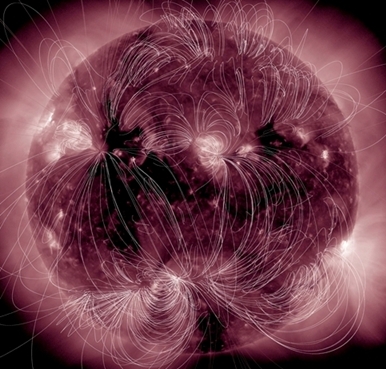
Here are following a series of illustrations of solar features and activity in varied wavelengths, visual light excepted. Albeit they might look like not most useful to a visual observation of the Sun, they may help you to decipher images and sources found at solar satellites websites, or to better understand and figure how main solar active events are working!
 | A View of Magnetic Fields Lines Mapped on A Extreme Ultraviolet Image. courtesy site 'Amateur Astronomy' based on a picture NASA/SDO |
Sun's General Magnetism. Sun activity mostly bases upon magnetism and convection. Field lines are most dense around sunspots regions, or 'active regions,' as they also link to other magnetically active areas across the Sun. Sun magnetic maps are now available from the SDO site. Solar data in general, from the SDO mission are also available from the Heliophysics page at NASA's site
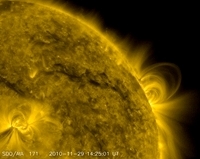 | A View of Magnetic Loops Arcing Above Sunspots. courtesy site 'Amateur Astronomy' based on a picture NASA/SDO |
Sunspots Like Source of Magnetism. A source of surface magnetism at Sun is in the sunspots regions with particles spiraling along field lines and magnetic forces in the sunspots regions connecting, breaking apart or reconnecting
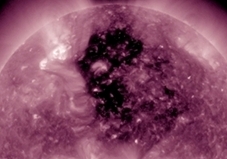 | A Coronal Hole Seen in The Extreme Ultraviolet. courtesy site 'Amateur Astronomy' based on a picture NASA/SDO |
Coronal Holes. Coronal holes are magnetically open regions on the Sun that stream high-speed solar wind into space. They are mostly unnevenly shaped and appear quite dark in the ultraviolet images. When streaming particles aim at Earth, that enhances the aurora activity
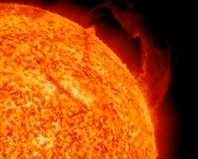 | A Prominence Seen Lingering Above the Solar Limb. courtesy site 'Amateur Astronomy' based on a picture NASA/SDO |
Prominences. Prominences are eruptive events and cooler clouds of gases suspended above the Sun by often unstable magntice forces. They may be stable enough to last for extended periods of time
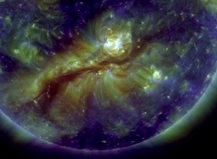 | When Seen Against the Solar Surface, a Prominence is Termed a Filament and Looks Darker Than the Environment. courtesy site 'Amateur Astronomy' based on a picture NASA/SDO |
Prominences Like Filaments. When seen against the solar disk, a prominence is termed a 'filament' and looking darker than the environment
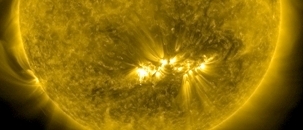 | Several Solar Flares Seen Like Bright Events are Seen Avove a Wide Sunspots Region. courtesy site 'Amateur Astronomy' based on a picture NASA/SDO |
Solar Flares. A solar flare is a quick, large scale burst of radiation coming from the release of magnetic energy associated with sunspots and our solar systemís largest explosive events
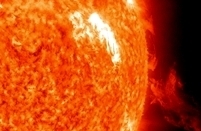 | A Coronal Mass Ejection (CME) is Hurling Into Space Like a Cloud of Radiation, Particles and Magnetic Field. courtesy site 'Amateur Astronomy' based on a picture NASA/SDO |
Coronal Mass Ejections. Coronal Mass Ejections (CME) may sometimes be associated with flares, or be independent as they are the confined solar atmosphere suddenly and violently releasing bubbles of gas and magnetic fields with billion tons of solar plasma ejected in the solar system, travelling at speed over a million mph
Website Manager: G. Guichard, site 'Amateur Astronomy,' http://stars5.6te.net. Page Editor: G. Guichard. last edited: 3/16/2011. contact us at ggwebsites@outlook.com